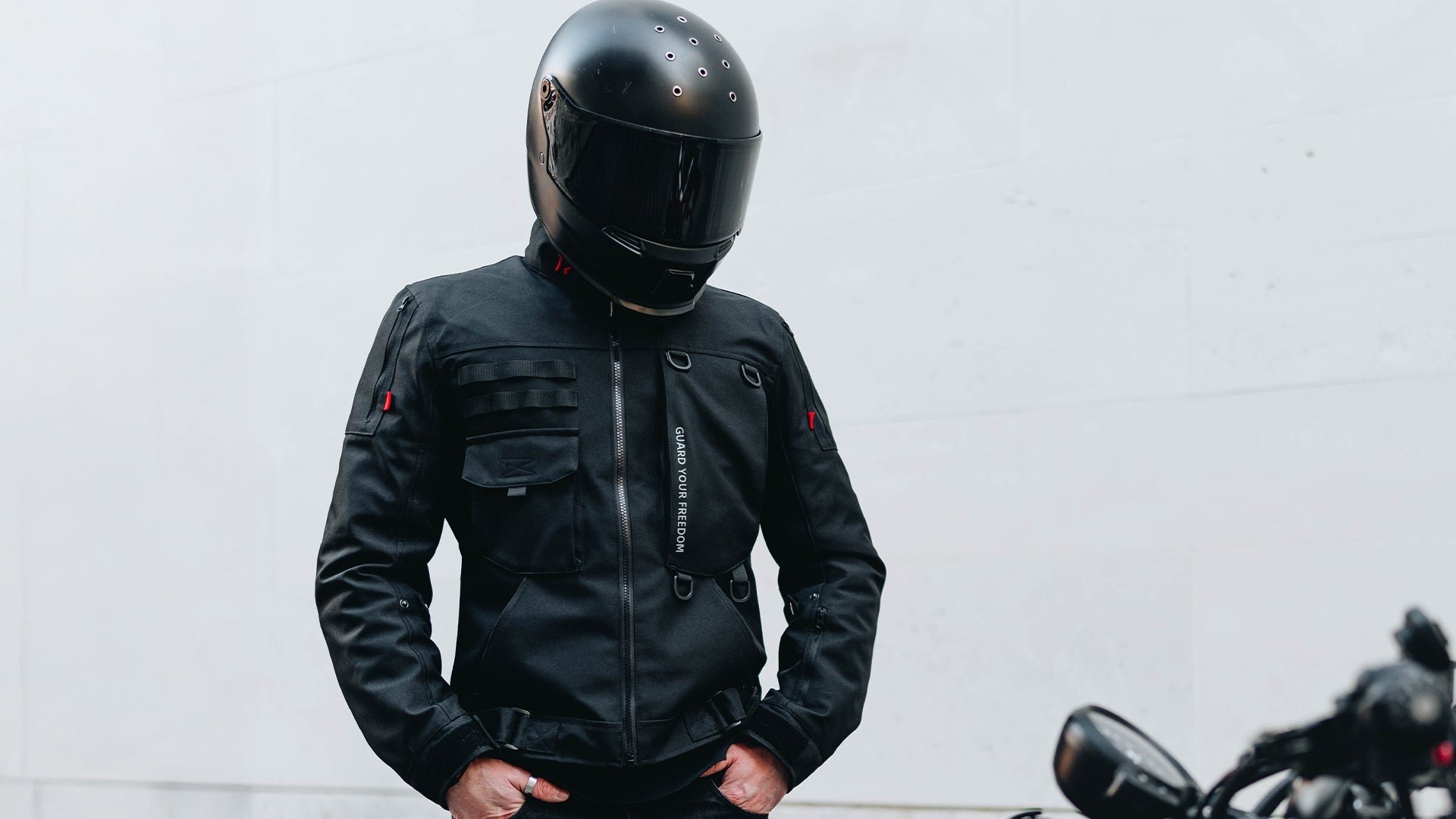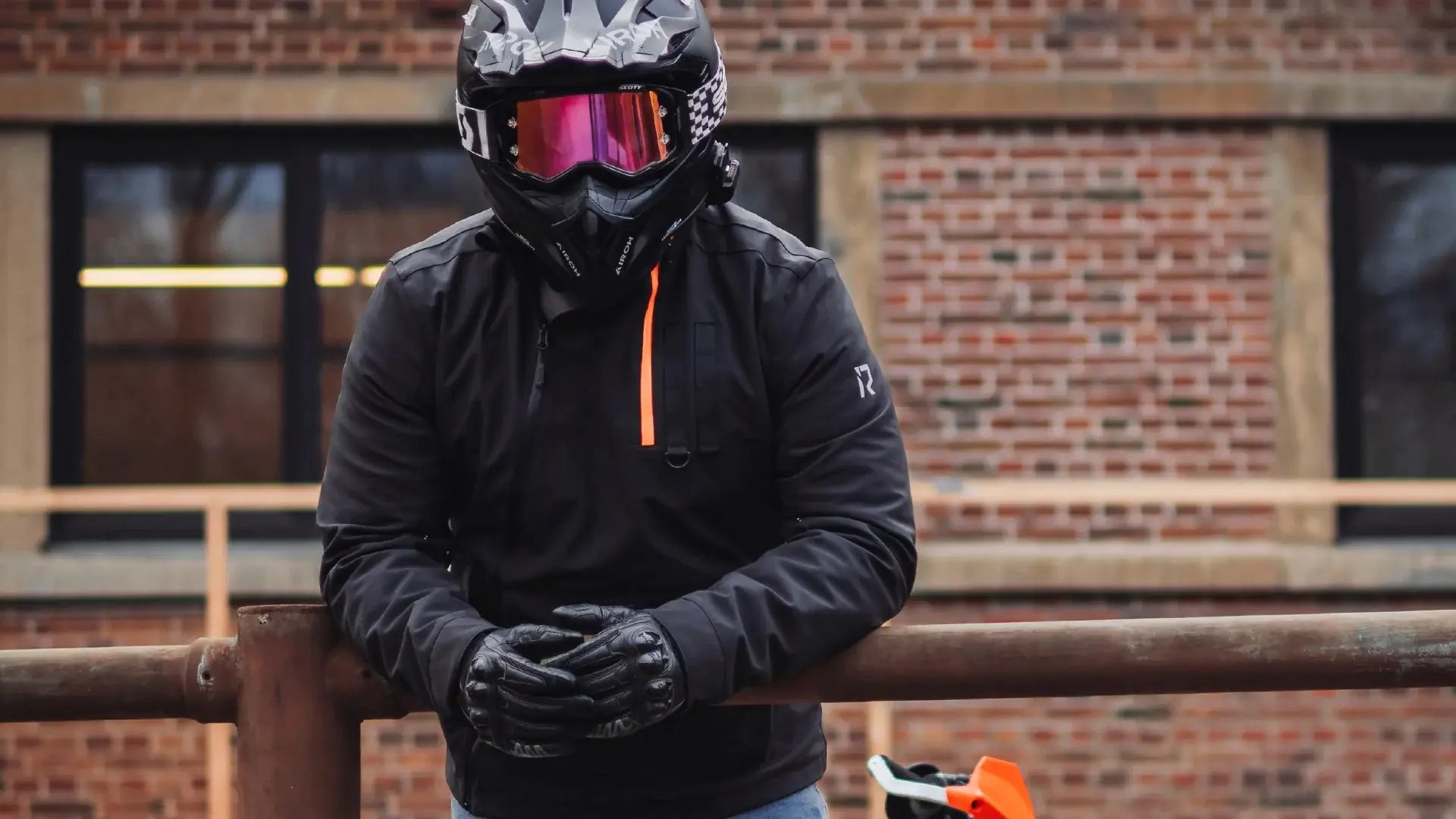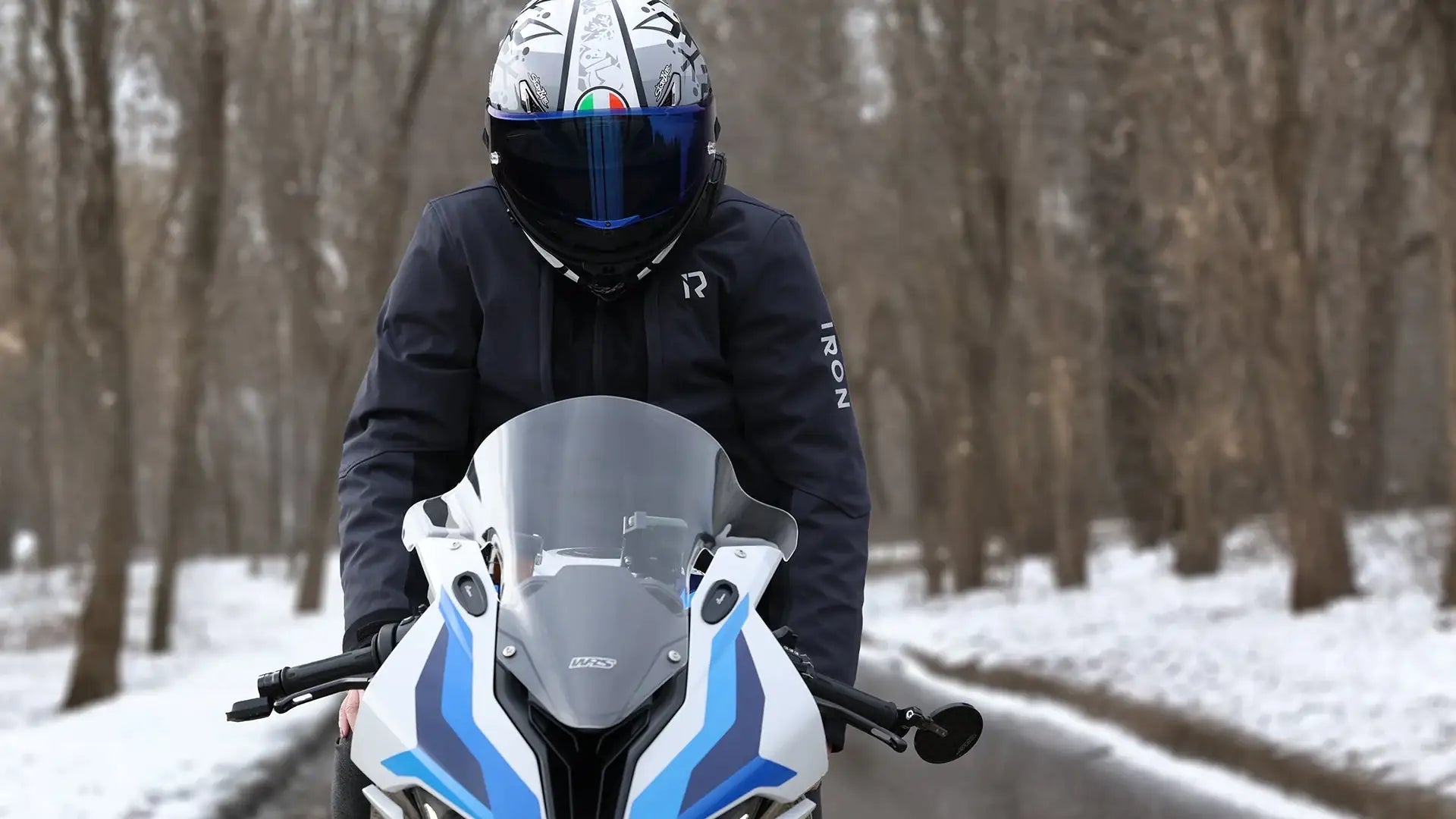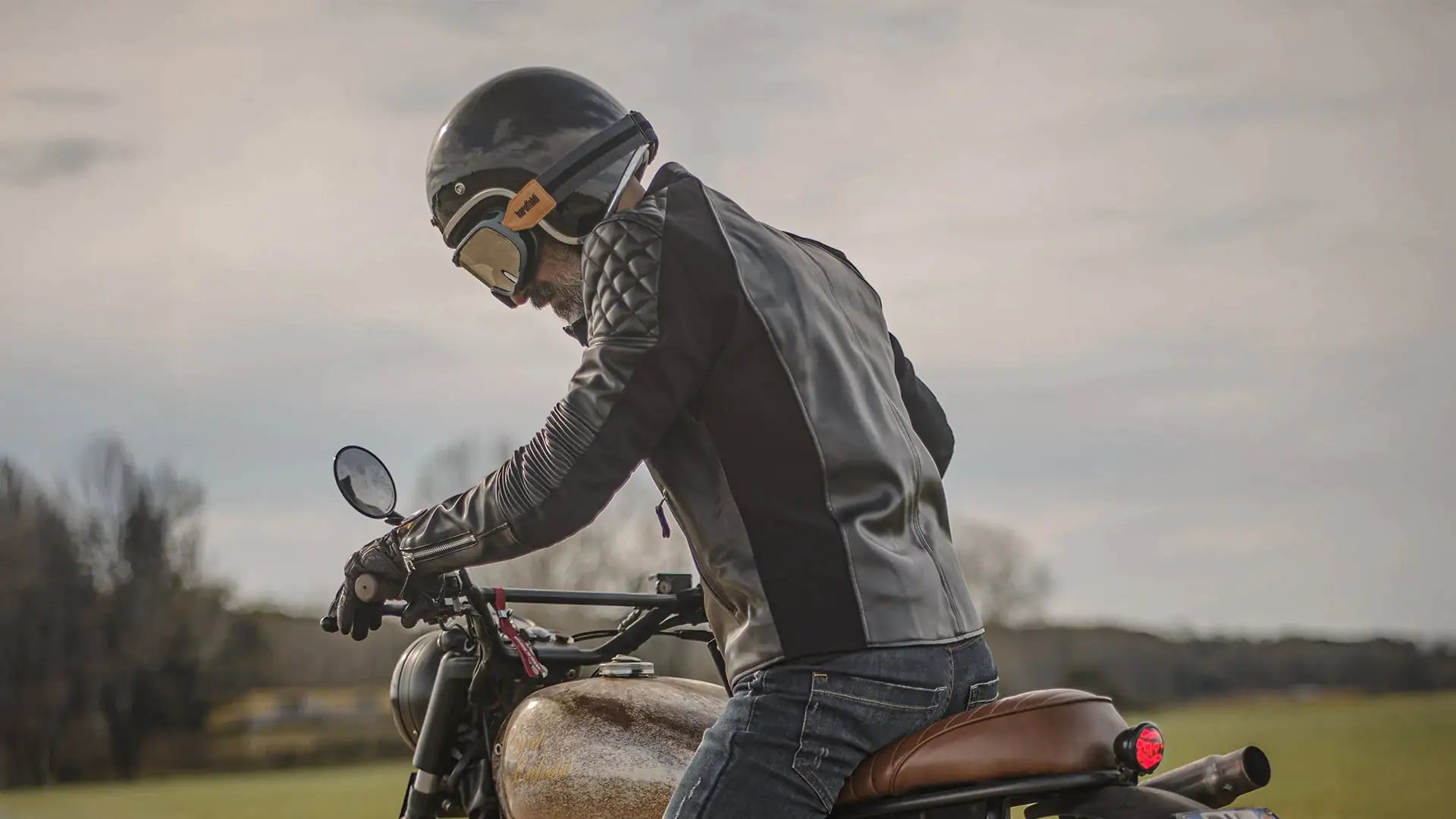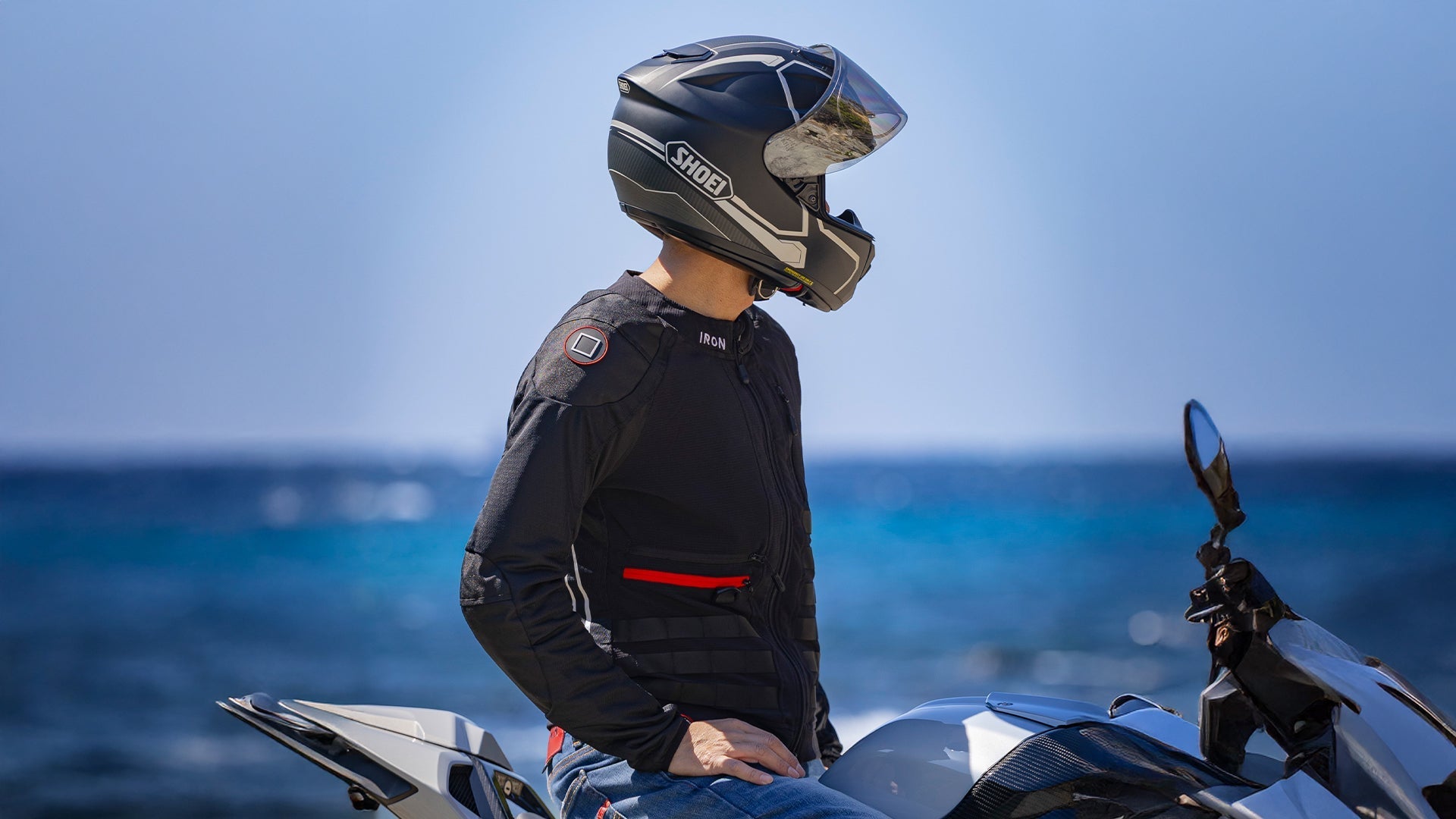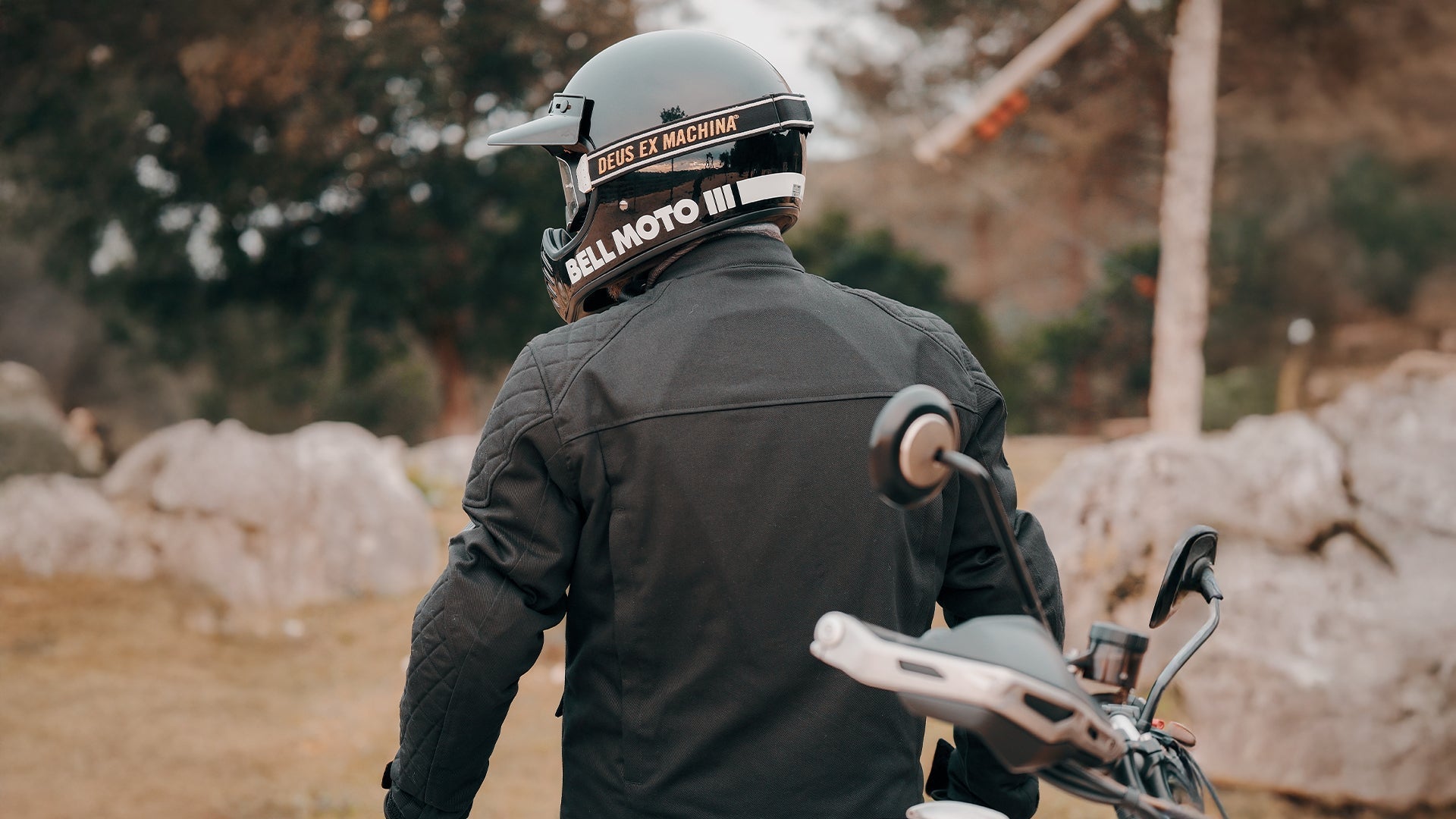Protective motorcycle jackets provide essential protection through premium materials like cowhide leather or Cordura-Kevlar textiles. For maximum safety, prioritize jackets with CE Level 2 armor at impact zones and AAA abrasion resistance ratings. The ideal jacket balances protection, comfort, and style to meet your riding needs. Read on to learn how to choose the right motorcycle jacket for your riding style and environment.
Key Takeaways
-
Look for protective jackets that provide abrasion and impact resistance for safety.
-
Quality motorcycling apparel includes CE Level 2 armor positioned at shoulders, elbows, and spine to maximize rider protection during impacts.
-
Properly fitted jackets should be tested in actual riding position to ensure armor remains correctly aligned with impact zones while maintaining comfort throughout journeys.
Different Types of Motorcycle Jackets Explained
Motorcycle jackets come in styles like armored, summer, vintage, winter, and casual. These are all designed to match specific weather, safety, and aesthetic needs for different riders and riding conditions.
Armored Jackets
Armored motorcycle jackets are built for maximum protection. They have reinforced impact zones with CE-rated armor and abrasion-resistant materials like textile blends or leather. These jackets are ideal for sport riders, daily commuters, and touring enthusiasts who want serious safety on the road. Ride Iron’s armored jackets offer strategically placed protection without sacrificing comfort or mobility, making them a top choice for riders who log serious miles or push performance limits.
Summer Jackets
Summer motorcycle jackets prioritize airflow and ventilation, using mesh panels and lightweight fabrics to keep you cool in hot weather. Best suited for riders in warm climates or those navigating city streets in peak summer, these jackets still offer abrasion protection while maximizing breathability. Ride Iron’s summer-ready designs combine durable materials with cooling zones that make them perfect for beating the heat without compromising safety.
Vintage Style Jackets
Vintage-style motorcycle jackets offer a classic, throwback look inspired by the golden age of motorcycling. Crafted with timeless silhouettes, natural finishes, and minimal branding, these jackets are ideal for riders who want style on and off the bike, especially those on cruisers, café racers, or scramblers. Ride Iron’s vintage-inspired pieces blend traditional aesthetics with modern safety features, making them a stylish but practical choice for the heritage-focused rider.
Winter Jackets
Winter motorcycle jackets are engineered for cold, wet, and windy conditions. Built with thermal liners, windproof shells, and waterproof membranes, these jackets are a must for year-round commuters and long-distance riders braving tough weather. Our winter models feature layered protection and high insulation without bulk, helping riders stay warm, dry, and visible through the harshest riding seasons.
Casual Jackets
Casual motorcycle jackets look like everyday streetwear but include discreet protective elements like aramid linings and removable armor. They're perfect for urban riders, commuters, or anyone who wants a jacket that transitions seamlessly from the bike to daily life. Our casual lineup is designed for riders who value low-key style with hidden safety.
Comparing Motorcycle Jackets
Below you can compare these types of jackets side-by-side:
|
Jacket Type |
Main Purpose |
Best For |
Materials |
|
Armored motorcycle jacket |
Maximum impact and abrasion protection |
Sport riders, daily commuters, long-distance tourers |
CE-rated armor, abrasion-resistant textile, leather, Kevlar |
|
Summer motorcycle jacket |
Breathability and heat relief with core protection |
Warm-climate riders, urban commuters |
Lightweight mesh, perforated textiles, reinforced panels |
|
Vintage style jacket |
Timeless styling with discreet safety features |
Heritage bike riders, café racer and cruiser fans |
Distressed leather, waxed cotton, subtle armor integrations |
|
Winter motorcycle jacket |
Insulation and weather protection for cold conditions |
Year-round riders, long-haul touring in cold/wet climates |
Thermal liners, waterproof membranes, windproof textiles |
|
Casual motorcycle jacket |
Everyday wear style with hidden protection |
City riders, scooter users, lifestyle-focused commuters |
Lined fabrics, denim, softshell, removable armor |
Choosing the Right Motorcycle Jacket Material
When shopping for your next riding jacket, material selection is your first line of defense on the road. You'll find cowhide leather offers reliable abrasion resistance and is a standard in the industry.
Not a fan of leather? You've got excellent textile options too. Cordura fabrics provide great tear resistance, especially when reinforced with Kevlar in critical impact zones like shoulders and elbows. For summer riding, jackets made with mesh materials provide airflow while maintaining essential protection.
As you weigh up leather versus textile for your jacket, pay special attention to weatherproofing features. Laminated construction will keep you dry as it prevents water from being absorbed into the outer material.
Safety Features and Armor Ratings
When you're picking out a motorcycle jacket, your safety should always come first. The armor ratings and safety features aren't just technical details. They could determine whether you walk away from an accident or not.
CE Level 2 protection gives you 50% better impact absorption compared to Level 1, which is especially important if you enjoy more aggressive riding or frequently hit higher speeds.
Also, consider where armor is placed in your jacket. Make sure you have solid protection at your shoulders, elbows, and particularly your spine. Jackets can also include advanced viscoelastic materials that stay flexible while you ride but instantly harden upon impact to absorb crash forces.
Finally, jackets with articulated designs keep protective elements properly positioned even when you're leaning into turns or changing your riding position. You get freedom of movement and protection at the same time.
Choosing the Right Jacket for Weather Conditions
Beyond safety features, you'll want to consider how your motorcycle jacket performs in different weather conditions to maximize your riding comfort and enjoyment.
When temperatures rise, look for jackets with mesh panels and lightweight textiles that provide crucial ventilation. This way, you’ll stay cool while you ride. All-mesh jackets are particularly ideal for hot weather riding as they maximize airflow while still providing protection.
For those chilly morning adventures, you'll appreciate thermal liners and windproof shells that retain body heat while blocking cold air. And if you're caught in a downpour, you'll be thankful for a seam-sealed waterproof shell made with durable or coated fabric/
All-season jackets also exist. These often include removable mid-layers and adjustable vents to give you the right comfort in different seasons. An all-season jacket is the best option for a year-round rider who doesn’t want a closet full of different jackets.
Finding the Perfect Fit
The right motorcycle jacket requires precise sizing that goes beyond typical clothing measurements. When your gear doesn't fit properly, you're not just uncomfortable—you risk your safety on the road.
Taking Measurements
Start by taking accurate measurements of your body. Wrap a measuring tape around the widest part of your chest, the narrowest section of your waist, and across your shoulders between the bone points. Having someone assist you with measurements will ensure accurate sizing for the best results.
Remember that your ideal fit also depends on your riding style. If you prefer more room to move, look for American cuts with their generous sizing. If you're after a more tailored experience, European designs offer a moderate fit, while race-oriented jackets provide the snuggest profile for aerodynamic performance.
Testing Your Jacket
Don't stop at static measurements. Once you've found a jacket that matches your numbers, perform a thorough mobility check while mimicking your riding position. Bend forward as you would ride your bike and extend your arms to test for comfortable movement.
Check that the protective armor stays positioned correctly over your elbows, shoulders, and back when you move.
Finally, try the jacket while sitting on your motorcycle. This real-world assessment will confirm whether the jacket truly works with your riding posture without bunching, riding up, or restricting your movement when you need it most.
How Much Do Motorcycle Jackets Cost?
When you're shopping for motorcycle jackets, understanding how prices are structured can help you make smarter decisions that balance your safety needs with what you can afford.
Affordable jackets typically start around $100 for PU and textile options that get the job done. At the top of the budget, high-end adventure riding gear can run well beyond $1,500.
To make the most of your budget, you'll want to evaluate the protection-to-price ratio. Also, be aware of hidden costs when comparing prices. Some jackets come with minimal protection, requiring you to purchase aftermarket armor upgrades that can add to the cost. This can quickly turn what seemed like a bargain into a more expensive purchase.
When calculating a jacket's true value, factor in its lifespan and warranty coverage. A quality jacket that lasts years is worth investing in.
Bottom Line: Find the Best Motorcycle Jacket for You
You have hundreds of options for motorcycle jackets on the market. Choose jackets that balance quality materials with protective armor and seasonal adaptability. Look for CE-rated protection in impact zones without breaking the bank. Your comfort depends on the proper fit for those long, challenging rides.
FAQs on Protective Motorcycle Jackets
Below are a few frequently asked questions about motorcycle jackets.
What type of jacket is best for a motorcycle?
Armored motorcycle jackets with CE-rated protection and abrasion-resistant materials are best. These offer safety for sport, touring, or commuter riders across various road conditions.
Should a biker jacket be tight or loose?
A motorcycle jacket should fit snugly without restricting movement. This ensures armor stays in place and reduces wind drag, especially at higher speeds.
Why are most motorcycle jackets black?
The color black hides grime, matches most gear, and has cultural roots in the cruiser and café racer styles. It also absorbs heat, which some riders prefer in cooler climates.
How do you pick a motorcycle jacket?
Choose based on riding style, weather, and protection level. Look for CE-rated armor, proper ventilation, and materials like leather or textile suited to your climate and bike type.




